Description
Subcritical Butane Extractor
Subcritical Fluid
Subcritical fluid refers to a substance that exists in the form of fluid under conditions where the temperature is above its boiling point but below the critical temperature and the pressure is also below its critical pressure.
Critical Temperature
When the temperature does not exceed a certain value, pressurize to liquefy the gas. Above the mentioned temperature, no matter how much pressure is applied, the gas cannot be liquefied. This temperature is called critical temperature.
Critical Pressure
At the critical temperature, the pressure necessary to liquefy the gas is called the critical pressure.
Commonly Seen Extraction Solvent
When extraction solvents such as propane, butane, high purity isobutane (R600a), 1,1,1,2-tetrafluoroethane (R134a), dimethyl ether (DME) are present in a subcritical fluid state, the molecular diffusion properties are enhanced. Those solvents’ mass transfer rate is accelerated, and the permeability and solvency for the non-polar, medium-weak, and highly polar substances of the natural products are significantly improved.
The boiling point of the solvent suitable for subcritical extraction is lower than the ambient temperature around us. Generally, the boiling point is below 0℃, and the liquefaction pressure at 20℃ is below 0.8 MPa (gauge pressure).
The subcritical solvents used in industrial applications are butane and propane initially. Then comes success with dimethyl ether, tetrafluoroethane (R134a), liquid ammonia, sulfur hexafluoride, dichlorodifluoromethane (freon R12), and chlorodifluoromethane (Solvents such as Freon R22). Because of the difference in the polarity of these solvents, they can be used to extract different target products in applications.
Common Subcritical Fluids Physical and chemical properties
| Propane | Butane | Dimethyl ether | Tetrafluoroethane | Liquid Ammonia | |
| Molecular Formula | C3H8 | C4H10 | CH3OCH3 | CH2FCF3 | NH3 |
| Molecular Weight | 44 | 58 | 102 | 17 | |
| Boiling Point ℃ | -42 | -0.5 | -24.9 | -26.2 | -33.4 |
| Pressure Mpa at 20℃ | 0.83 | 0.23 | 0.533 | 0.6 | 0.88 |
| Critical Temp ℃ | 95.7 | 152.8 | 129 | 101.1 | 132.3 |
| Critical Pressure MPa | 4.4 | 3.6 | 5.32 | 4.07 | 11.3 |
| Liquid Density: kg/L at 25℃ | 0.49 | 0.57 | 0.66 | 1.2 | 0.61 |
| Gas Density: kg/m 25℃ | 20.15 | 6.18 | 0.6 | ||
| Dielectric Constant | 1.69 | 1.78 | 5.02 | 16.9 | |
| Latent Heat of Vaporization KJ/kg at 30℃ | 329 | 358 | 410 | 216 | 1369 |
| Explosion Limit | 2.3%~9.5% | 1.9%~8.5% | 3.5%~27% | non-inflammable | 16%~25% |
| Toxicity LC50(mg/m3) | minor | minor 680 | 308000 | non-toxic | 1390 |
| Appearance | colorless, odor | colorless, odor | colorless, odor | colorless, odorless | colorless, pungent odor |
NOTE:
Latent heat of vaporization is a physical property of a substance. It is defined as the heat required to change one mole of liquid at its boiling point under standard atmospheric pressure.
Explosive limits specify the concentration range of a material in the air which will burn or explode in the presence of an ignition source.
Subcritical Fluid Extraction
Subcritical fluid extraction technology utilizes the special properties of the above-mentioned subcritical fluids. Raw material put into the extraction tank, soaked by subcritical fluid. Extract out effective ingredients by using their similar physical properties. Control certain material/liquid ratio, extraction temperature, extraction time, and extraction pressure, sometimes supported by extraction agent and entrainer or with the aid of stirring and ultrasonic to finish the extraction process. The extracted mixture passes through solid-liquid or liquid-liquid separation and enters the evaporation system. Under the action of the compressor and vacuum pump, the solvent is converted from a liquid state to a gas state. The left ingredient is the wanted extracts.
Subcritical Fluid Extraction Characteristics
Subcritical fluid extraction has many advantages over other separation methods.
For machinery itself: non-toxic, harmless, environmental friendly, non-polluting, non-thermal processing;
For active ingredients: retain activeness, non-oxidized; Complete materials extraction and dissolve at room temperature(relatively low-temperature extraction compared with other methods), the heat-sensitive components in oils and meals would not be damaged, achieving the quality of extraction and separation for protein, pigment, medicinal herbs, and volatile oil products.
For industry application: it can be industrialized for large-scale production. Energy-saving, low operating cost, and easy solvent separation. Less solvent consumption, per ton of raw material, consumes solvent below 8kg. Therefore, subcritical fluid extraction and separation techniques are widely used found in natural flora and fauna extraction.
Subcritical Extraction Machine Workflow
Factors Affecting Subcritical Fluid Extraction
Factors that can either improve or affect extraction efficiency:
♠Solvent/ Material ratio;
♣Stirring;
♠Extraction temperature& pressure;
♠Extraction process time and extraction times;
♠Selection and application of solvent and entrainer;
♠Auxiliary ultrasonic extraction;
Material/ solvent ratio
Theoretically speaking, a larger solution ratio, a higher extraction efficiency, and the industrial production process are generally controlled between certain ratios for the reason of cost optimization.
Stirring
The extraction process is a process of molecules relative diffusion. Moderate agitation can increase the mixing between solvent and material, reduce the diffusion resistance in the extraction, and make the concentration of the extraction system to favor the fat-soluble component in the solid material diffusion to the liquid solvent.
Extraction temperature& pressure
Increasing the extraction temperature speeds up molecule movement, thereby increasing the rate of diffusion, but too high temperature causes ingredient inactivation. Therefore, the temperature is controlled within a certain temperature and should be controlled during the whole production process. The pressure is positively correlated with the temperature, the higher extraction temperature, higher extraction pressure is. Increased pressure fast extraction speed.
Extraction process time and extraction times
For different materials, reasonable extraction time and times should be obtained by small trial tests on lab size extraction machines. Then in the actual production process, the extraction efficiency will be improved by the countercurrent extraction process between tank groups.
Selection and application of solvent and entrainer
A suitable amount of entrainer(co-solvent) can significantly increase the solubility of certain extracted components in subcritical fluid.
Auxiliary Ultrasonic Extraction
In the process of subcritical fluid extraction of natural animal and plant active ingredients, the “cavitation” effect of ultrasonic waves can be used to intensify the penetration, dissolution and diffusion activities of the extraction solvent, reduce the external diffusion resistance of the extraction, and shorten the extraction time, thereby greatly improving extraction efficiency. Correspondingly production yield increases but production costs decrease. The practice has shown that the introduction of ultrasonic-assisted technology in the subcritical extraction process has great advantages.
Subcritical Fluid Extraction Application
There is a wide application for butane extraction in the plant, herbs, essential oil, perfume, pigment, animal fat, protein and etc., below list some of the samples.
SPECIAL PLANTS AND CHINESE HERBAL MEDICINE OIL
Wheat Germ Oil; Grape Seed Oil; Peony Seed Oil; Flaxseed Oil
Walnut Oil; Sea Buckthorn Seed Oil; Ricebran Oil; Almond Oil
Xanthoceras Sorblfolia Bunge Oil; Acer Truncatum Buge Oil; Schisandra Chinensis Oil; Perilla Seed Oil
Pumpkin Seed Oil; Camellia Oil; Evening Primrose Oil; Borage Oil
Blackcurrant Seed Oil; Lycium Seed Oil; Tomato Seed Oil; Cucommia Seed Oil
Pomegranate Seed Oil; Schlcichera Trijuga Seed Oil; Cherry Seed Oil; Mulberry Seed Oil
Moringa Seed Oil; Lappa Seed Oil; Sacha Inchi Oil; Plukenetia Volubilis Oil
Cyperus Esculentus Oil; Avocado Oil; Saw Palm Oil; Malania Oleifera Oil
Safflower Seed Oil; Carrot Seed Oil; Pine Seed Oil
Green Gooseberry Oil; Cocoa Butter; Shea Butter; Antrodia Oil
PLANT ESSENTIAL OIL, NATURAL PERFUME, SPICES
Rose; Rosemary; Gardenia; Sandalwood
Agilawood; Pepper; Cumin; Tobacco Essential Oil
PLANT PIGMENTS
Paprika Red Pigment; Marigold Lutein; Lycopene
PROTEIN PRODUCTS
Peanut Protein; Soyabean Protein; Wheat Germ Protein; Rice Protein
Walnut Protein; Pumpkin Seeds Protein; Flaxseed Protein; Hemp Protein
ANIMALS, MICROBE, INSECTS
DHA. EPA. ARA; Ganoderma Lucidum Spores; Fish Fat and Oil; Silkworm Chrysalis, Frog Egg
Industrial Butane Extraction Machine Operation Safety
We mainly describe the operation safety from three aspects, even our butane extraction equipment is strong and safe.
I. Machinery parts
The subcritical solvent in the extraction process itself is a flammable and explosive hazardous chemical. Air entry into the process is a major hazard of the equipment itself. If the proportion of air in the equipment reaches explosion upper and lower limits, under sparks or static electricity, there might be an explosion.
The air source in the equipment: one is from raw material loading, the air left after the vacuum; another one is from leakage on the equipment. During the process operation, air entry should be reduced as much as possible. The equipment should be also air release frequently. After the air is exhausted, it can lower the pressure release load on the compressor and also improve equipment safety.
The pressure of the subcritical solvent is generally between 0.3 and 0.8 MPa. The equipment piping and itself are filled with solvent liquid or gas. Leakage at any place will cause a large amount of solvent leakage. When the liquid solvent leaks out, the volume will expand to several hundred times instantly. Therefore, the equipment must be safe and reliable. Never open the equipment port or loosen the bolts or replace parts while there is still solvent or pressure inside the equipment. If any leakage from the equipment, stop operation immediately. At the same time, it is forbidden to use equipment over-pressure!
II. Workshop Environment
Electrical instruments and wires in the room should be made of explosion-proof and have reliable electrostatic grounding. When performing electrical maintenance, electrical equipment and power should be turned off. There should be no low-lying areas in the workshop to avoid the accumulation of solvent gas. During the experimental production, no fire is allowed in the room, and electrical appliances (hand drills, video recorders, etc.) and motorcycles are not allowed to avoid generating fire sparks., electric cars, cars, etc., it is strictly prohibited to use mobile phones during work!
III. Extraction Workshop Firefighting Knowledge Operators should conduct fire-fighting knowledge training before taking up their posts. They should master the nature of subcritical solvent fire hazard and fire-fighting methods to rule out the hazard. The explosion upper and lower limits of various subcritical solvents are different, but it is the most dangerous in the range where the concentration of subcritical solvent reaches its limit. A fire spark is prohibited from the workshop. When the solvent is ejected from holes or cracks in the device, it may cause a combustion explosion due to static accumulation. When this happens, the solvent in the damaged device should be immediately removed and the valve of other equipment connected to it should be closed. The personnel is evacuated from the workshop. Only when solvent gas removed and cleaned, the staff is allowed to enter and do the maintenance.

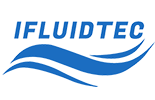











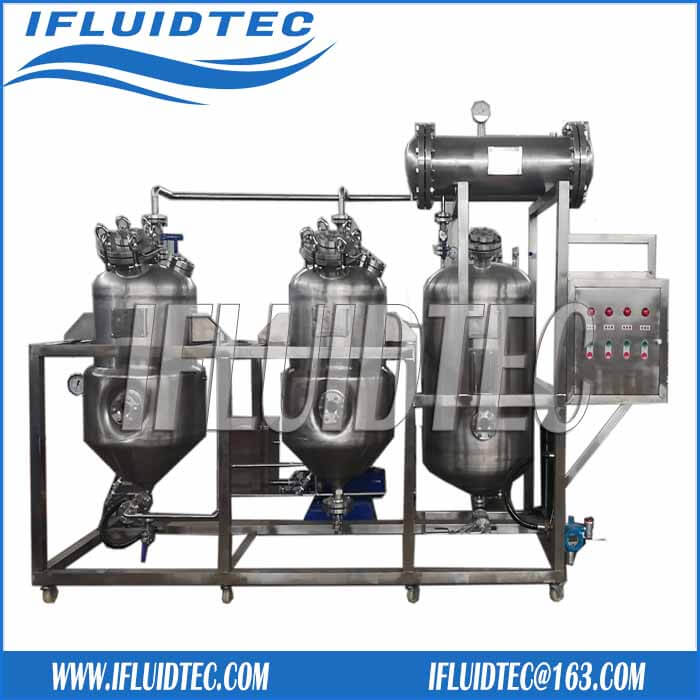

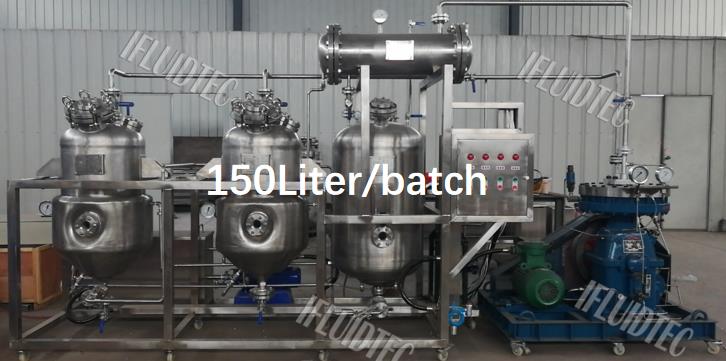
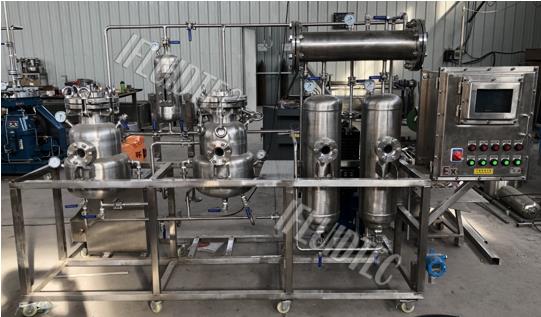



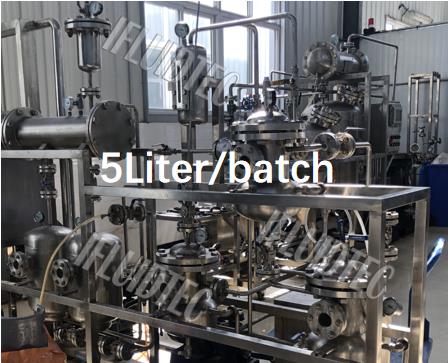
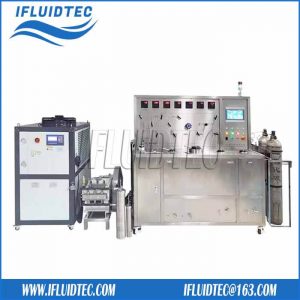
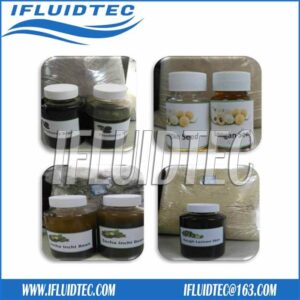
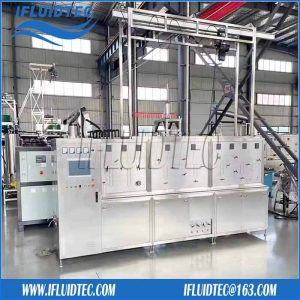
Reviews
There are no reviews yet.